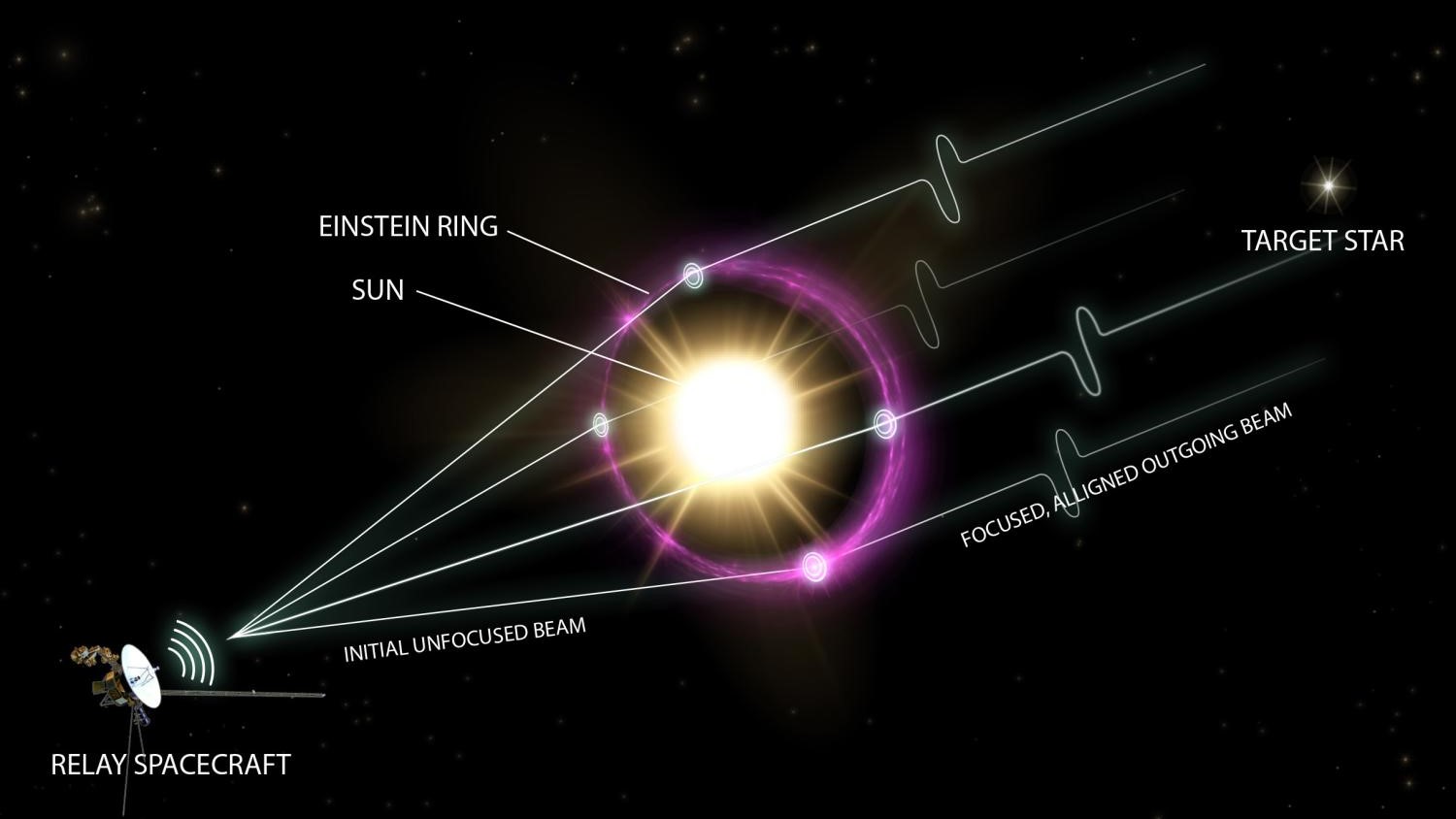Could we eavesdrop on aliens by detecting signals relayed around the sun?
We'd also be able to communicate with our own interstellar probes using the same method.

Researchers may have found a new way to detect signals from advanced alien civilizations.
Einstein's theory of general relativity tells us that the gravitational pull of massive celestial objects can bend light. When it does so, it focuses and magnifies light like a telescope in an effect called gravitational lensing. But visible light might not be the only thing that is affected by this process.
Graduate students in a course about the search for extraterrestrial intelligence (SETI) at Penn State suggest that communication signals might also be amplified through gravitational lensing. And if that's possible, we might even be able to eavesdrop on extraterrestrial communications being relayed around the sun.
Related: Sun's gravitational lens could help find life on exoplanets
The group theorizes that vast interstellar communication networks could use gravitational lensing to relay transmissions over great distances, similar to how cellphone networks operate here on Earth.
"Humans use networks to communicate across the world all the time," Nick Tusay, a student in the course, said in a statement. "When you use a cellphone, the electromagnetic waves are transmitted to the nearest cellular tower, which connects to the next tower and so on."
If probes are set up in specific positions near a star to take advantage of its gravitational lensing, they could be used as relay points for this communications network. The students propose that, if an advanced alien species has discovered this process, and they happen to be using the sun as a relay point, we'd be able to pick up those signals.
Get the Space.com Newsletter
Breaking space news, the latest updates on rocket launches, skywatching events and more!
They tested this hypothesis by collecting data from the Green Bank Telescope in West Virginia and searching for radio transmissions that might be relayed from our nearest stellar neighbors, located in the Alpha Centauri system.
"There have been a few previous searches using optical wavelengths, but we chose to use radio wavelengths, because radio is a great way to communicate information across space," Macy Huston, another student in the course, said in the statement.
Though the students didn't discover any alien transmissions, not all hope is lost. "Our search was limited to one night, so anything that wasn't broadcasting while we were observing was not going to get picked up," Tusay said. "Although our limited search could miss existing probes if they weren't constantly broadcasting at these frequencies, this was a good test to see if this kind of search is possible."
And while the group hopes that future students in the course will continue listening for extraterrestrial transmissions, gravitational lensing can also be used beyond the search for alien life.
"Astronomers have considered taking advantage of gravitational lensing as a way to essentially build a giant telescope to look at planets around other stars," Jason Wright, professor of the course and director of The Penn State Extraterrestrial Intelligence Center, said in the statement. "It has also been considered as a way that humans might communicate with our own probes if we ever sent them to another star."
A paper describing the technique has been accepted for publication in The Astronomical Journal, and a preprint version is available via the arXiv database.
Follow Stefanie Waldek on Twitter @StefanieWaldek. Follow us on Twitter @Spacedotcom and on Facebook.
Join our Space Forums to keep talking space on the latest missions, night sky and more! And if you have a news tip, correction or comment, let us know at: community@space.com.

Space.com contributing writer Stefanie Waldek is a self-taught space nerd and aviation geek who is passionate about all things spaceflight and astronomy. With a background in travel and design journalism, as well as a Bachelor of Arts degree from New York University, she specializes in the budding space tourism industry and Earth-based astrotourism. In her free time, you can find her watching rocket launches or looking up at the stars, wondering what is out there. Learn more about her work at www.stefaniewaldek.com.









